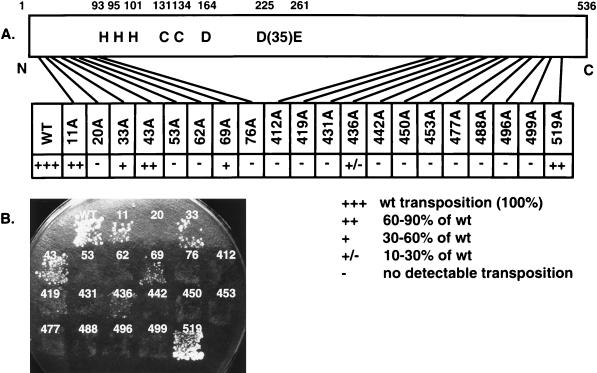FIG. 2.
Ty3 transposition assay. (A) Schematic diagram and transposition activity of charged-to-alanine scanning Ty3 IN mutants. The conserved HHCC zinc finger motif and the D,D(35)E motif are indicated. The positions of the mutations in the 536-amino-acid protein are indicated by lines. A quantitative plasmid-based suppressor target assay was used to score transposition events for each of the Ty3 IN mutants (see Materials and Methods). Transposition was scored by suppression of the ade2-101 lys2-1 markers of yeast strain yTM443 as papillations on minimal medium containing leucine and tryptophan. Quantitative transposition assays were performed at least twice with one or two independent transformants for wild-type Ty3 and IN mutants. A comparison of transposition levels between each mutant and the wild type (wt) is shown. (B) Qualitative assay for Ty3 transposition. Ty3 IN mutants were patched onto SD medium lacking uracil and histidine to select for the donor and target plasmids, respectively. The plate was incubated at 30°C for 24 h, and the cells were replica plated to minimal medium containing leucine and tryptophan (results not shown) and to SG lacking uracil and histidine to induce Ty3 transposition. After 48 h at 30°C on SG, the patches were replica plated onto minimal medium containing leucine and tryptophan and incubated at 30°C for 6 days. Transposition was scored as described in panel A.

